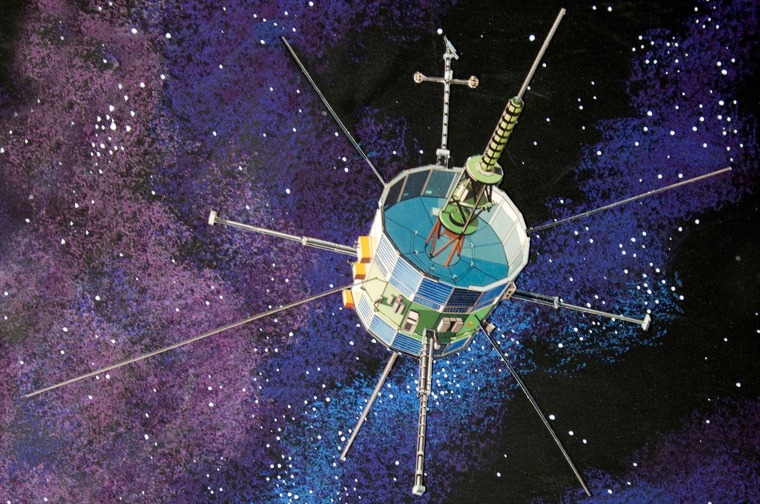Efforts to revive and redirect a decades-old spacecraft met with a serious setback this week as the probe's fuel reserves were found to be depleted. But the mission is far from over.
"Is this what we planned on? No," Keith Cowing, leader of the ISEE-3 Reboot Project, said in a phone interview with NBC News. "But we have so many other options for using the spacecraft, no way are we shutting this thing off."
Sign up for Science news delivered to your inbox
The team members behind the crowdfunded project have had phenomenal success in their effort to contact and reboot the International Sun-Earth Explorer 3 craft, originally launched in 1978. Its communication equipment dates from the same era, so even contacting it was a major endeavor — and after that, there was the question of whether the craft's sensors, propulsion and other systems were still functioning.
Not only did the team manage to recreate in software the original radio equipment and get a signal from ISEE-3 after many years of silence, but a diagnostic revealed that the craft was in excellent working order. Its solar cells in particular are in amazing shape, which Cowing said was a pleasant surprise to NASA.
But after a pair of successful test burns, the propulsion system quit responding Wednesday. The team suspects that the nitrogen used to pressurize the fuel system may be spent, and is polling the community for potential solutions.
"We haven't given up hope on the propulsion system," Cowing said. They're going to try to turn the craft's heaters on, which might up the pressure enough to fire another pulse.
Regardless, it's not a time for doom and gloom. Just because they can't redirect ISEE-3 doesn't mean the spacecraft's life is over.
"We always had a plan for if we couldn't fire the engine," Cowing explained. The spacecraft's orbit, which is similar but slightly wider than Earth's, means that now that they've made contact, they can keep that contact. "We'll be able to hear the spacecraft no matter where it goes."
Of course, being unable to redirect it means they can't perform any maneuvers — such as avoiding celestial objects.
"It has a non-zero chance of hitting the moon," Cowing admitted. The small test burns affected ISEE-3's orbit slightly, so there's some uncertainty about how big a chance there is until Cowing and his colleagues decide for sure that they have no remaining thrust and do the detailed calculations to determine the craft's new orbit.
The empty tank may splash a little cold water on the hopes of the project's backers, who ponied up over $160,000 in a crowdfunding campaign earlier this year, but space enthusiasts know that missions are full of risks like this.
What's next? Calculating the new orbit with great precision — for a photo op.
"It's shiny, it's about 6 feet high, 6 feet across — we're challenging people to get a picture of it," Cowing said. Only those with serious glass need apply; you'll need a pretty big telescope to make out the probe, but it's far from impossible.
After that, the team will settle in and make the best of the new trajectory, optimizing the craft for science.
"The news of the spacecraft's demise is exaggerated," Cowing assured NBC News. "We haven't even begun to use it."
